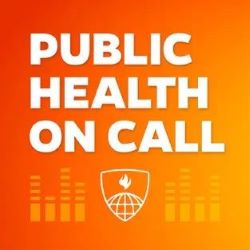September 27, 2022
The Community Health Corner

Community health uses science-based approaches for the greatest health benefit to the greatest number of people by addressing the social, economic and structural drivers that impact everyone’s health. The National Extension Framework for Health Equity and Well-being recommends using community development practices to ensure that every person has the opportunity to "attain his or her full health potential," and no one is "disadvantaged from achieving this potential because of social position or other socially determined circumstances." The following tools and resources can be used to improve health equity and well-being working with communities to achieve the nation’s Healthy People 2030 objectives.
PREPARE NOW: According to the Johns Hopkins School of Public Health, OTC (over the counter) hearing aids are coming this fall. Now that prescriptions for hearing aids are no longer needed, those in need of the devices can skip the visit to a hearing care provider, a move that will help reduce medical costs and increase competition and innovation in the hearing aid market. Tune into the Johns Hopkins podcast with Dr. Frank Lin, director of the Cochlear Center for Hearing & Public Health at Johns Hopkins, who explains the links between hearing loss and dementia, and the important step forward in affordable care for those with mild to moderate hearing problems. Listen to the “Public Health On Call” 13min podcast here.
READ NOW: The Kansas Health Institute (KHI) has reported the Kansas uninsured rate is now higher than that of the United States. The uninsured rate in Kansas is now significantly higher than the uninsured rate in the U.S. for the first time in decades. While the Kansas rate did not change from 2019, the national uninsured rate improved over the same time. The difference between Kansas and the U.S. in 2021 primarily reflects a higher uninsured rate in Kansas among working age adults. There are also significant disparities among Kansas residents by race and ethnicity. Read the KHI report here.
AVAILABLE NOW: AffordableHealthInsurance.com, a patient resource center whose mission is to help youth who are vulnerable to bullying, suicide attempts and homelessness, has produced a resource to guide youth and their families through many health insurance considerations. See the online, seven-part guide here.
For more information, contact Elaine Johannes, ejohanne@ksu.edu; and Stephanie Gutierrez, smgutier@k-state.edu.